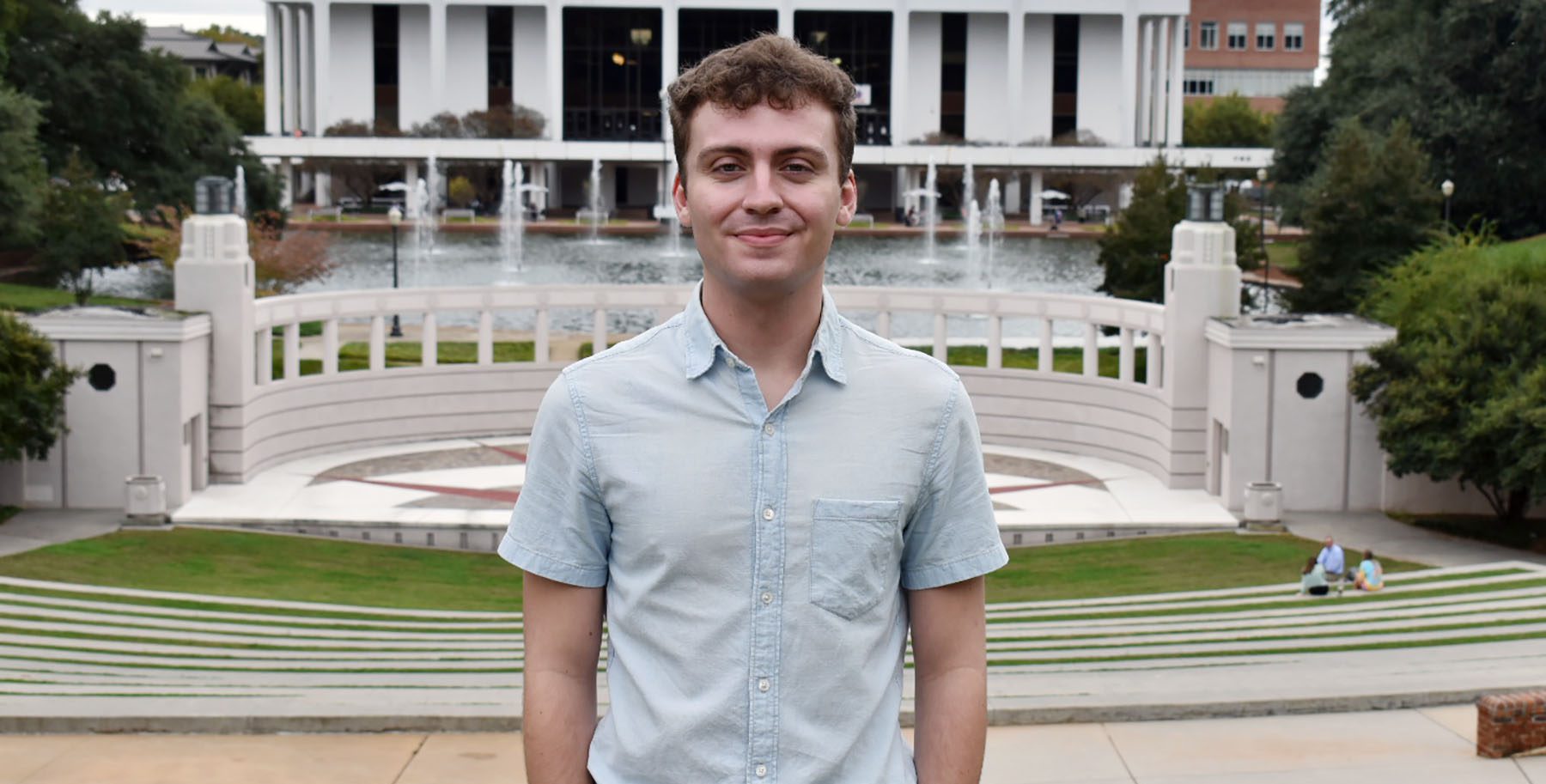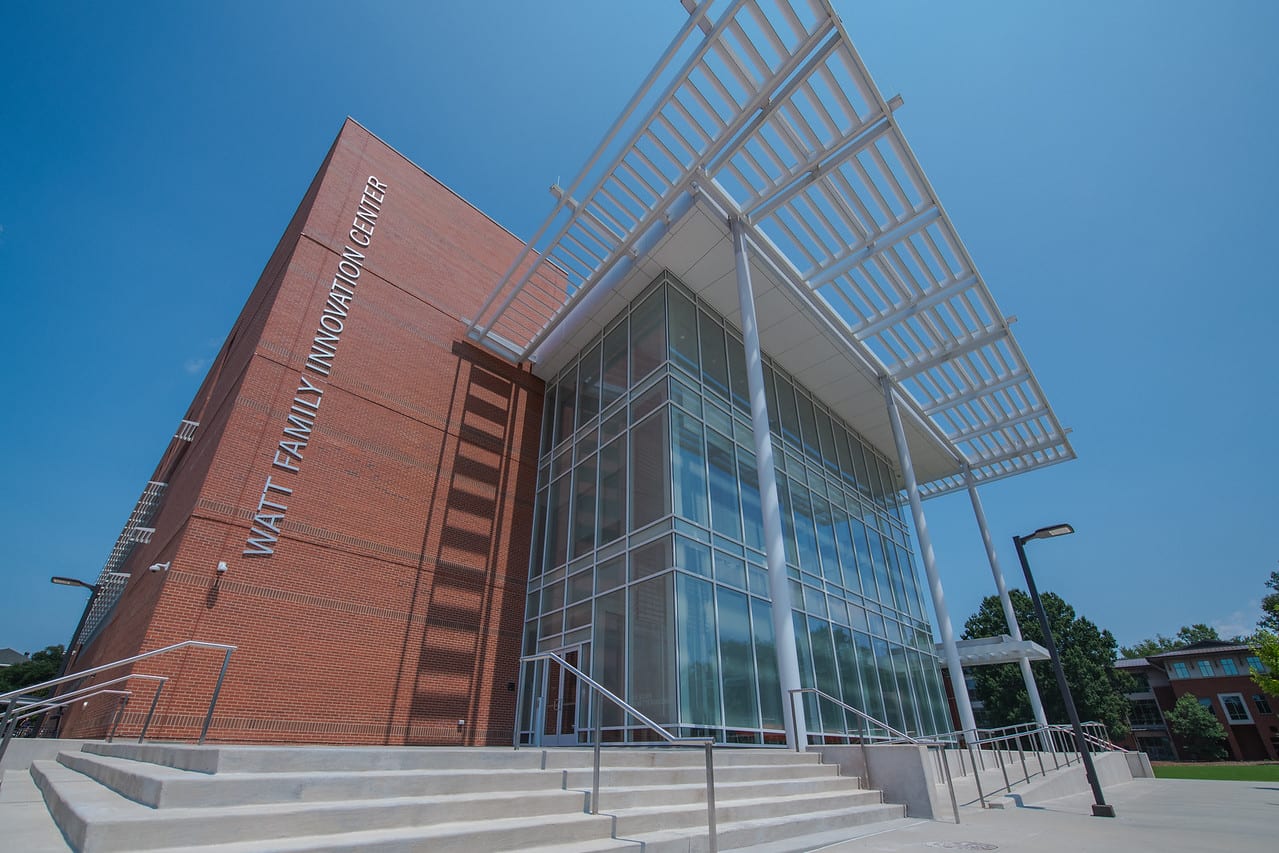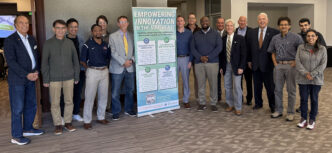
CLEMSON, S.C. – Glutathione is a potent antioxidant that might help prevent diseases such as cancer, Alzheimer’s and Parkinson’s.
The research of one of Clemson University’s Beckman Scholars, Luke Broughton, centers on how to measure and increase its concentration in the human body.
The concentration of glutathione in cells drops with age and many diseases such as Parkinson’s disease, HIV, cataracts, and autism.
“Glutathione depletion correlates with poor disease prognosis,” said Broughton, a junior from Lancaster, South Carolina who is a biochemistry major in the College of Science Department of Genetics and Biochemistry. “Our job is to determine how we can increase the intracellular concentration of antioxidants like glutathione so we can combat these diseases from starting.”
The body’s normal metabolic functions — such as digesting food, exercising, and fighting off viruses and bacteria — produce free radicals. Since electrons like to be in pairs, free radicals seek electrons from other molecules, such as DNA and proteins, thereby damaging the cell. Antioxidants, such as glutathione that is produced by cells and others that might be consumed as part of a healthy diet, neutralize free radicals by giving up one of their electrons and protecting the molecules that are important to protecting the cell from damage.
“I think the research bug has really bitten him. It is something he very much enjoys doing. His work on measuring and understanding glutathione redox balance in my group has opened his eyes to the impact such research can have on entire fields,” said Julia Brumaghim, a bioinorganic chemistry professor and Broughton’s Beckman Scholars mentor. Broughton has worked with Brumaghim’s group and graduate student Nicole Hostetter since the 2019 Fall semester and plans to continue working with the laboratory through his senior year.
Broughton said being a Beckman Scholar allowed him to take a more active role in shaping the research project. It also allowed him to continue to work on his research over the past summer during the coronavirus pandemic.
“I’m involved in the research rather than being a pair of hands in the lab. I’ve been able to run some of my own experiments and develop my own protocols,” he said. “I’ve really enjoyed that because I like to solve problems. I’ve had to do that a lot over the summer and this past semester.”
One problem he had to solve occurred early in his project.
Glutathione binds to iron and copper and scavenges free radicals, but scientists don’t know how reduced and oxidized glutathione bind to the metals to prevent oxidative damage. While working with oxidized glutathione, Broughton couldn’t get an enzyme that triggers the cycling reaction to work. To prove his protocol worked and the enzyme was ineffective, he tried a different compound. This time, it did work. But when he ran his experiments, some of which take several days, he got results that weren’t reproducible.
Broughton discovered metal contamination from dust caused the errors. He noted that trace amounts of metal in the dust sped up the rate of reactions and oxidized the compounds very quickly.
Since cells use a lot of energy to make glutathione, they work hard to recycle it. “There are real challenges in the field for measuring the active versus inactive forms of glutathione because they are so similar,” Brumaghim said.
[vid origin=”youtube” vid_id=”FRACCzRUfgQ” size=”medium” align=”left”]
Broughton’s new protocol for measuring glutathione concentrations also distinguishes between the active and inactive forms. The research team has recently began collaborating with Ken Marcus, an analytical chemistry professor who was approached by industry to measure active and inactive glutathione ratios in industrial fermenters used by pharmaceutical companies to produce medically active compounds.
Combining the approach developed by Broughton in the Brumaghim group with that being developed in the Marcus group could validate both methods, help measure active and inactive glutathione concentrations in industrial fermenters, and help understand disease progression and prevention.
The Arnold and Mabel Beckman Foundation selected Clemson as a Beckman Scholars Program institution in 2019. This program provides select undergraduates with a unique 15-month mentored laboratory research experience. Clemson students must have one year of research experience to apply and are expected to continue research through their senior year. The University has awarded five of its six prestigious scholarships. The sixth Beckman Scholar will begin research in 2021.
“The Beckman Scholars Program is designed to groom exceptionally talented undergraduate researchers, such as Luke, to become leaders in their fields,” said Barbara Speziale, associate director for academic affairs at the Watt Family Innovation Center.
“Luke’s deep understanding and passion for science is evident,” added Speziale, who is also director of Creative Inquiry and a professor of biological sciences.
Broughton plans to pursue M.D./doctoral degrees in biochemistry and to continue studying antioxidants and possible therapies for oxidative stress.







